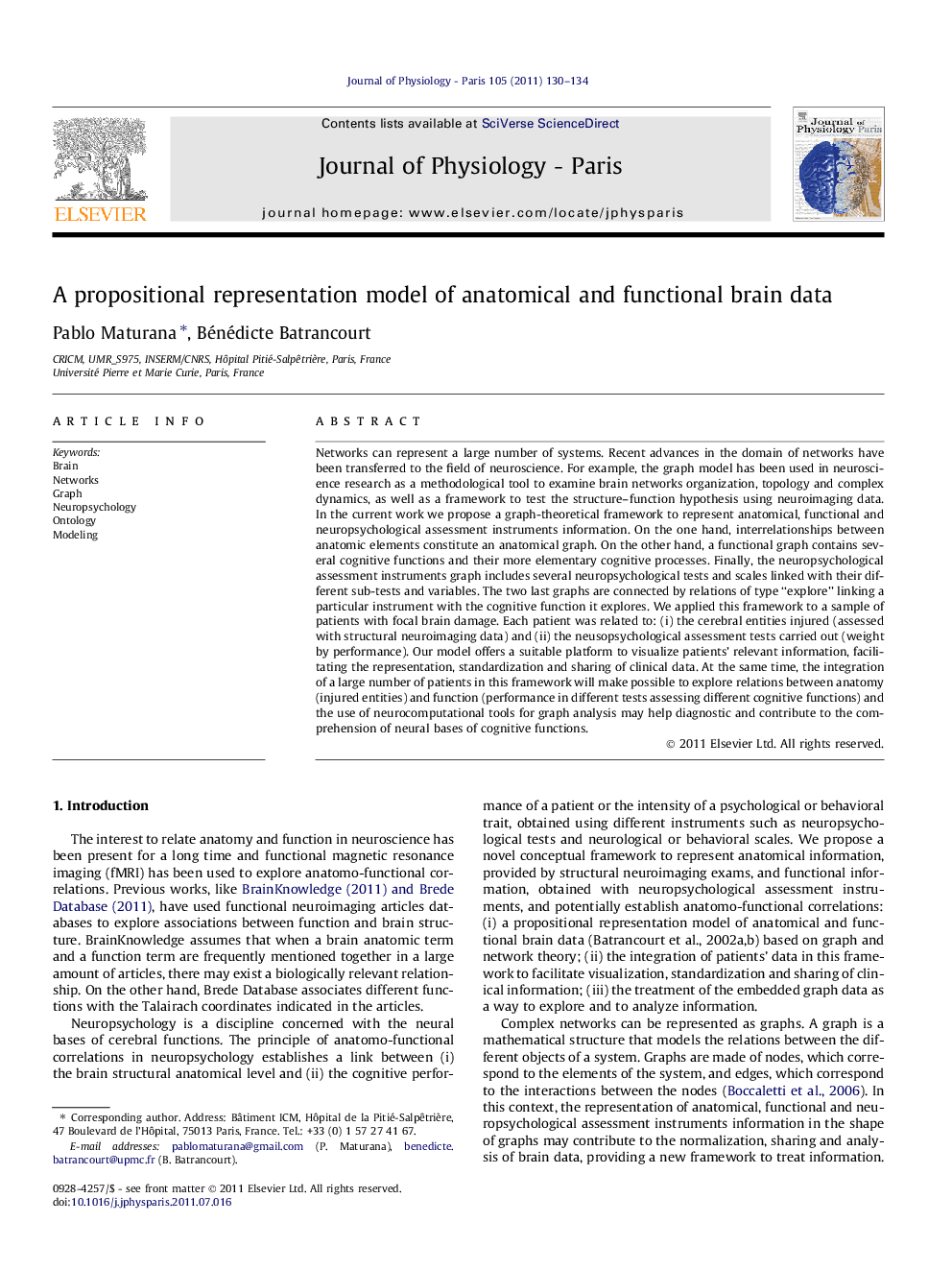| Article ID | Journal | Published Year | Pages | File Type |
|---|---|---|---|---|
| 2842235 | Journal of Physiology-Paris | 2011 | 5 Pages |
Networks can represent a large number of systems. Recent advances in the domain of networks have been transferred to the field of neuroscience. For example, the graph model has been used in neuroscience research as a methodological tool to examine brain networks organization, topology and complex dynamics, as well as a framework to test the structure–function hypothesis using neuroimaging data. In the current work we propose a graph-theoretical framework to represent anatomical, functional and neuropsychological assessment instruments information. On the one hand, interrelationships between anatomic elements constitute an anatomical graph. On the other hand, a functional graph contains several cognitive functions and their more elementary cognitive processes. Finally, the neuropsychological assessment instruments graph includes several neuropsychological tests and scales linked with their different sub-tests and variables. The two last graphs are connected by relations of type “explore” linking a particular instrument with the cognitive function it explores. We applied this framework to a sample of patients with focal brain damage. Each patient was related to: (i) the cerebral entities injured (assessed with structural neuroimaging data) and (ii) the neusopsychological assessment tests carried out (weight by performance). Our model offers a suitable platform to visualize patients’ relevant information, facilitating the representation, standardization and sharing of clinical data. At the same time, the integration of a large number of patients in this framework will make possible to explore relations between anatomy (injured entities) and function (performance in different tests assessing different cognitive functions) and the use of neurocomputational tools for graph analysis may help diagnostic and contribute to the comprehension of neural bases of cognitive functions.
► We propose a conceptual framework based on graph theory to visualize brain data. ► Data includes anatomical, functional and neuropsychological assessment information. ► The framework allows developing new ways to explore anatomo-functional correlations. ► We apply this framework to several cases of patients with focal brain damage.
